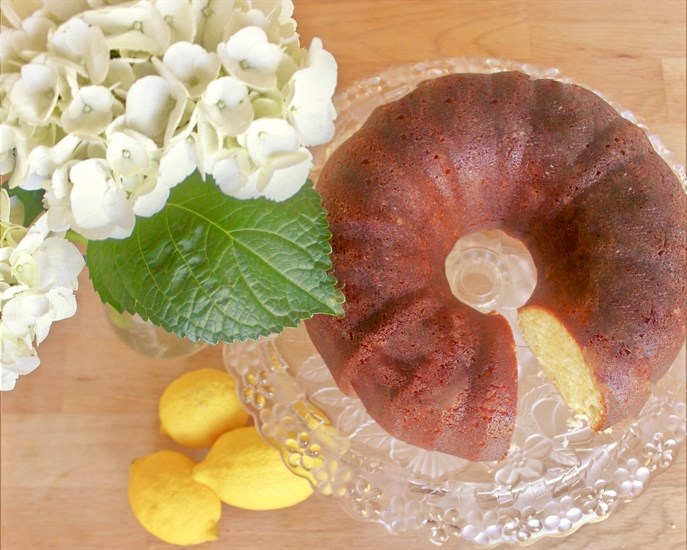The Bundt cake is once again gracing the kitchens of North America

The Bundt cake was born in 1950 when H. David Dalquist, the owner of the Minnesota Nordic Ware company, was asked by a local Jewish women’s society to create a metal cake pan similar to the European handmade ceramic baking molds that were used to make traditional kugelhopf, a yeast-based cake.
Dalquist accepted the request and created a fluted tube cake pan in cast aluminum, trademarked it the “Bundt” and added it to his line of Nordic cookware.
In 1966, Ella Helfrich from Texas launched the Bundt pan frenzy when she took second prize in the National Pillsbury Bake Off competition with her Tunnel of Fudge cake made in a Bundt pan.
The Bundt became the “it" homemade cake of the 1970s and early 1980s with hundreds of recipes appearing in magazines, newspapers and cookbooks. Pillsbury even created an entire line of cake mixes dedicated to the Bundt pan including the famed Tunnel of Fudge Cake.
By the 1990s, the Bundt cake had faded from popularity and with the downturn in sales, Pillsbury eliminated the Bundt cake mixes and grandma’s Bundt pan was officially relegated to the back shelf.
The return of the Bundt cake began in England when superstar chef, Yotam Ottolenghi started selling gorgeous teacakes made in mini-Bundt pans in 2002. The mini-Bundt teacakes became recognized as one of Ottolenghi’s trademark desserts and soon were copied by bakeries around the world.
Continuing the Bundt cake’s return to fame was the start of a new interior design trend known as “grandma chic” which was renamed “grandmillenial style” in 2019 by Emma Bazilian, a writer for House Beautiful. With millennials embracing vintage plates, teacups and embroidered linens, grandma’s Bundt cake once again become a chic and sophisticated homemade dessert.
While there are thousands of Bundt cake recipes, one of the simplest and most famous comes from Maida Heatter, who was known as America’s “Queen of Cake”. A self-taught pastry chef and cookbook author, Maida was famous for her best-selling cookbooks and recipes which appeared in The New York Times, Bon Appétit, Gourmet and the Ladies Home Journal. In 2019, her last cookbook the Happiness of Baking was published, and she died shortly after at the age of 102.
Maida Heatter’s East 62nd Street Lemon Cake
Adapted from Happiness is Baking by Maida Heatter published by Little, Brown and Company.
*The East 62nd Street Lemon Cake was named after her daughter’s New York address and the recipe was first published in the New York Times Magazine in 1970.
Special Equipment
9-inch Bundt cake pan
Ingredients:
3 cups sifted unbleached all-purpose flour (plus extra for dusting the Bundt pan)
2 tsp baking powder
½ tsp salt
1 cup unsalted butter (2 sticks), at room temperature (plus extra for greasing Bundt pan)
2 cups sugar
4 large eggs
1 cup whole milk
2 tablespoons lemon zest
For the Glaze
? cup lemon juice
¾ cup sugar
Directions:
Adjust an oven rack one-third up from the bottom of the oven. Pre-heat oven to 350°F.
Melt 3 to 4 tbsp of butter. Using a pastry brush, grease the bundt pan with the melted butter and then flour. Make sure to get all of the nooks and crannies with the melted butter.
Sift together the flour, baking powder, and salt, and set aside.
In the large bowl of an electric mixer, beat the butter until soft. Add the sugar and beat until incorporated. Beat in the eggs, one at a time, scraping the bowl as necessary with a rubber spatula. The mixture might look curdled — it's okay.
On lowest speed, add the dry ingredients alternately in three additions, with the milk in two additions, beating only until incorporated after each addition.
Remove the bowl from the mixer and stir in the lemon zest. Pour the batter into the greased bundt pan and smooth the top of the batter.
Bake for approximately 1 hour and 5-10 minutes, until a cake taster or toothpick inserted near the centre comes out clean.
While the cake bakes, make the glaze. Warm the lemon juice and sugar in a small saucepan over medium-low heat until all of the sugar is dissolved. Remove from heat.
When the cake is done, remove from oven. Let cake stand in the pan for 5 minutes, then cover with a cake rack and invert. Tap the pan firmly and shake it gently to help loosen the cake.
Apply the lemon glaze with a pastry brush to the tops and sides of cake until it is all absorbed.
Let cool completely and then transfer to a cake plate.
Enjoy!
— Claire Sear is a West Coast based food, drink & lifestyle writer
We welcome your comments and opinions on our stories but play nice. We won't censor or delete comments unless they contain off-topic statements or links, unnecessary vulgarity, false facts, spam or obviously fake profiles. If you have any concerns about what you see in comments, email the editor.



